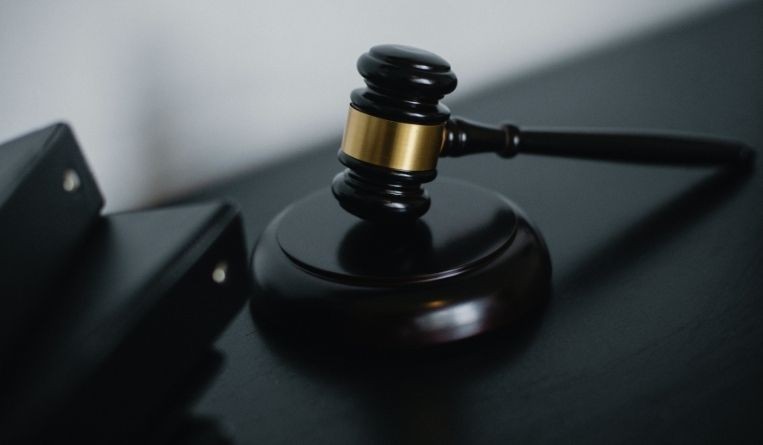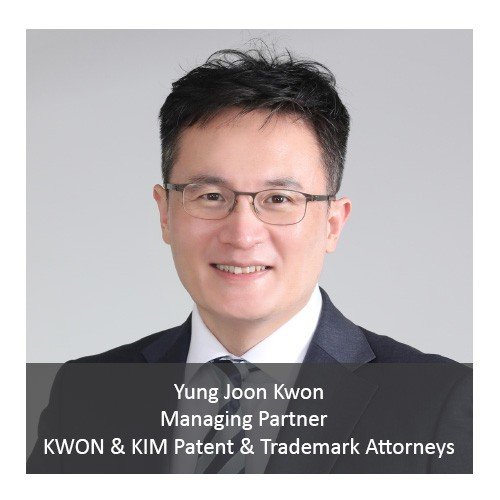Various IPR Amendments on Korean Acts Effective April 20
11 April 2022

Various amendments to the Korean Patent Act, Trademark Act, and Design Protection Act will take effect this April 20,2022. This is to improve the IPR laws to be more friendly to the applicant and to remedy the mistakes actively of applicants and to maximize the opportunity to acquire rights.
Previously, once non-extensible deadline lapses, it is tough to reinstate a proceeding or a right unless there was an excuse for "force majeure" to the extent of "war" or "earthquake", which hardly happens, in many of cases when such non-extensible deadlines lapse, where "mistakes" involved are attributable by the applicant or a representative, so that they had not been entitled to such restoration.
According to YungJoon KWON, a managing partner in KWON & KIM Patent & Trademark Attorneys in Seoul, South Korea, however, these days, since the outbreaks, it is not rare for domestic, especially international clients to fail to contact its attorney to meet the deadline requirements, due to a sudden quarantine or being affected by the virus, it happening to even for the representative.
"The new law is intended to lower a hurdle to curing the problem," he says. "From another perspective, once a Final rejection, where an application is finally rejected at a primary examiner's level, is issued to an application for failing to meet the grant requirements, and if the applicant wishes to appeal the rejection, the Korean IPR law just allows 30 days before the appeal is lodged, counted from receipt date of the rejection, which is much short, during and by which the applicant and the representative should make a decision of whether to appeal or amend claims (for patent) or delete some identifications of goods or services (for trademark). In many cases, especially, for international clients, an extension is required to be requested along with paying a further fee, to secure additional 30 days to review and make a decision. Such short time period pushes a representing attorney to rush to report the bad news of rejection to the client almost immediately, without more deeper analysis to evaluate a chance of success of possible appeal or other resolutions such as dividing an application. Under the new law we will have enough time to analyze, report, and discuss with the client."
The most remarkable change to the IPR law, he says, is that Korean patent law adopts the so-called “Separation Application”.
"Korean patent law considers one patent application as a whole entirely, which means that even after one or more claims are decided as patentable by the examiner, the patent application will be entirely rejected as a whole unless the allowed claims are divided as a new application. Otherwise, the rest of rejected claims are cancelled in the instant application," he says. "Therefore, when the Final rejection rejects a patent application with some claims decided as being patentable though, then if an applicant decides to appeal the rejection and the appeal is eventually un-successful, the application is rejected as a whole entirely, which is not reasonable because there has been contained allowed claims in the application. However, under the new law, a new form of application called "Separation Application" may be filed after receipt of such an unsuccessful decision of the appeal, only for the allowed claims listed in the Final rejection. It is very reasonable and friendly to the applicant of the patent application, who originally wishes to try first to pursue the application entirely by appealing. Then once the appeal is founded to be moot, this allows changing its mind to pursue only allowed claims."
Previously, once non-extensible deadline lapses, it is tough to reinstate a proceeding or a right unless there was an excuse for "force majeure" to the extent of "war" or "earthquake", which hardly happens, in many of cases when such non-extensible deadlines lapse, where "mistakes" involved are attributable by the applicant or a representative, so that they had not been entitled to such restoration.
According to YungJoon KWON, a managing partner in KWON & KIM Patent & Trademark Attorneys in Seoul, South Korea, however, these days, since the outbreaks, it is not rare for domestic, especially international clients to fail to contact its attorney to meet the deadline requirements, due to a sudden quarantine or being affected by the virus, it happening to even for the representative.
"The new law is intended to lower a hurdle to curing the problem," he says. "From another perspective, once a Final rejection, where an application is finally rejected at a primary examiner's level, is issued to an application for failing to meet the grant requirements, and if the applicant wishes to appeal the rejection, the Korean IPR law just allows 30 days before the appeal is lodged, counted from receipt date of the rejection, which is much short, during and by which the applicant and the representative should make a decision of whether to appeal or amend claims (for patent) or delete some identifications of goods or services (for trademark). In many cases, especially, for international clients, an extension is required to be requested along with paying a further fee, to secure additional 30 days to review and make a decision. Such short time period pushes a representing attorney to rush to report the bad news of rejection to the client almost immediately, without more deeper analysis to evaluate a chance of success of possible appeal or other resolutions such as dividing an application. Under the new law we will have enough time to analyze, report, and discuss with the client."
The most remarkable change to the IPR law, he says, is that Korean patent law adopts the so-called “Separation Application”.
"Korean patent law considers one patent application as a whole entirely, which means that even after one or more claims are decided as patentable by the examiner, the patent application will be entirely rejected as a whole unless the allowed claims are divided as a new application. Otherwise, the rest of rejected claims are cancelled in the instant application," he says. "Therefore, when the Final rejection rejects a patent application with some claims decided as being patentable though, then if an applicant decides to appeal the rejection and the appeal is eventually un-successful, the application is rejected as a whole entirely, which is not reasonable because there has been contained allowed claims in the application. However, under the new law, a new form of application called "Separation Application" may be filed after receipt of such an unsuccessful decision of the appeal, only for the allowed claims listed in the Final rejection. It is very reasonable and friendly to the applicant of the patent application, who originally wishes to try first to pursue the application entirely by appealing. Then once the appeal is founded to be moot, this allows changing its mind to pursue only allowed claims."

He adds, "The amendment will revise our IPR law to be more friendly and favorable to the applicant, especially, the international applicant. Additionally, a priority claim will be automatically attached to a divisional application if the claim was made to the parent application to prevent a lose of priority claim for the divisional application by not adding the claim, when dividing an application by mistakes. Also, a co-owner of the patent right will continue to use its patent invention for
her or his ongoing business using the patent invention, even after the patent is transferred to a third party by a foreclosure auction to settle other owner's debt."
He says that a re-examination for a patent can be requested by an applicant, if a clerical error is to be corrected, even after the application is allowed.
"For a re-examination to the design application, an amendment to drawings or a specification can be submitted if it is within 3 months deadline, not at the same time of filing the re-examination under the previous law. This means that if the 3 months does not lapse, a new amendment is allowed to be filed for the re-examination again with the further amended drawings or specification -even after the applicant already lodged such re-examination," he says.
Excel V. Dyquiangco
her or his ongoing business using the patent invention, even after the patent is transferred to a third party by a foreclosure auction to settle other owner's debt."
He says that a re-examination for a patent can be requested by an applicant, if a clerical error is to be corrected, even after the application is allowed.
"For a re-examination to the design application, an amendment to drawings or a specification can be submitted if it is within 3 months deadline, not at the same time of filing the re-examination under the previous law. This means that if the 3 months does not lapse, a new amendment is allowed to be filed for the re-examination again with the further amended drawings or specification -even after the applicant already lodged such re-examination," he says.
Excel V. Dyquiangco






